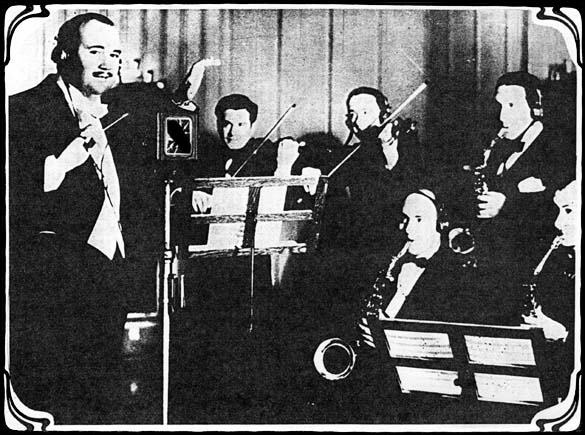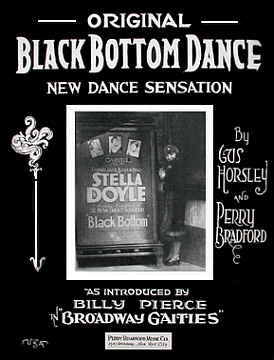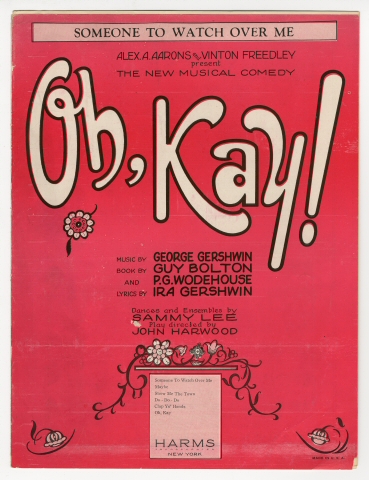Calvin Coolidge was in the White House, Wheatena was on the breakfast table, and for two cents you could send a first-class letter. The world's first radio network—NBC—was born that year and Paul Whiteman reigned as radio’s so-called "King of Jazz." In literature Ernest Hemingway, writing in a new American voice, produced his "lost-generation" novel, The Sun Also Rises. It’s a Jazz Age "soundtrack" from the Class of ’26, this week on Riverwalk Jazz.
On May 22, 1926 the song "Five Foot Two, Eyes of Blue (Anybody Seen My Gal)" recorded by Gene Austin hit #1 on the charts. But Jazz Age record companies weren't limited to perky pop tunes with silly lyrics. The "race-record" industry churned out hits by female blues singers like Sippie Wallace, Alberta Hunter and "Empress of the Blues" Bessie Smith. In March of 1926 Okeh released Sippie Wallace's "Jack o Diamonds Blues" along with her "Special Delivery Blues" featuring Louis Armstrong on trumpet and her brother Hersal Thomas on piano.
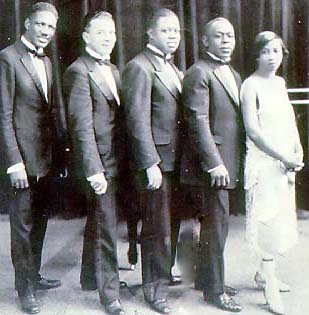
Okeh PR photo of Armstrong's Hot Five, courtesy The Louisiana State Museum.
Louis Armstrong had spent most of 1925 in New York as a member of the Fletcher Henderson Orchestra, but by early '26 he was back in Chicago stirring things up. Many nights, after performing as a star attraction with popular big bands, Armstrong would head into Okeh’s Chicago studio with his quintet, the Hot Five, and lay down history-making tracks. With the now-legendary sidemen: clarinetist Johnny Dodds, trombonist Kid Ory, Johnny St. Cyr on banjo and guitar, and Louis' wife Lil Hardin Armstrong on piano, the Hot Five provided a perfect setting for Armstrong's ground-breaking trumpet solos—breathtaking in their virtuosic brilliance and widely imitated.
On the silent movie screen Rudolf Valentino starred in Son of the Sheik, the sequel to his mega-hit of 1921, The Sheik, which had established him as the archetypal screen lover. The news of Valentino's death on August 23 sent his fans into a hysterical state of mass mourning. Dozens of suicide attempts were reported and 100,000 mourners lined the streets at the church where his funeral was held. Also that year Douglas Fairbanks played a swashbuckling buccaneer in The Black Pirate and Buster Keaton created his classic dead-pan persona in The General.
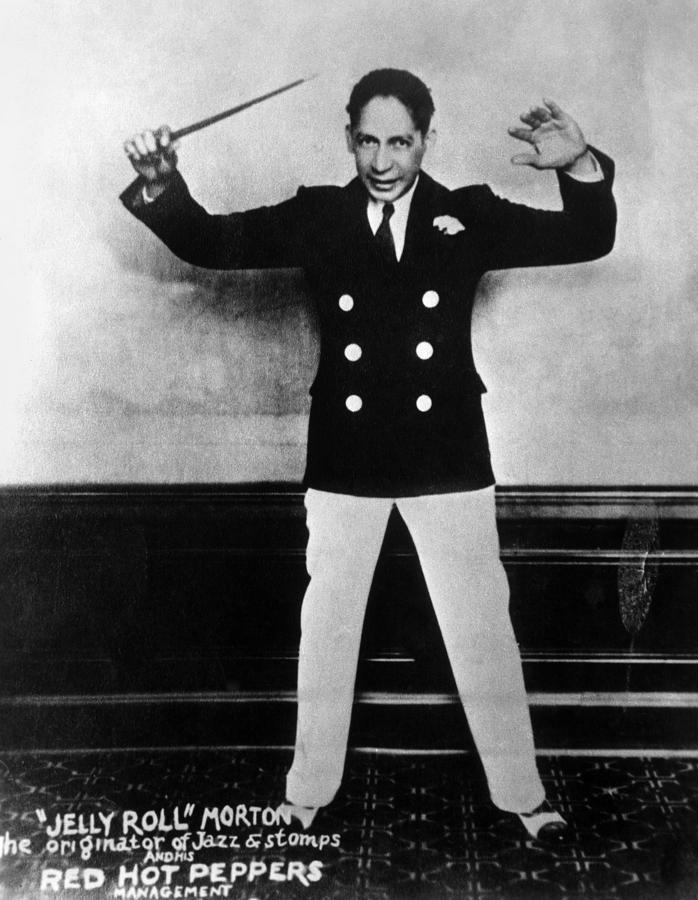
Jelly Roll Morton, self proclaimed "inventor of jazz." Public domain.
In 1926 the '20s were roaring full-throttle and few places roared louder than Chicago. Jelly Roll Morton grew up in New Orleans but he’d lived in Los Angeles, Alaska, Texas and Tijuana before he settled in Chicago. On his 1926 Victor recording sessions he captured strikingly original music that are today considered classics of the New Orleans jazz style. His hot new releases for the class of '26 include, "The Pearls," "King Porter Stomp" and "Mr. Jelly Lord."
On September 25, 1926 Henry Ford shocked business leaders and pleased the public when he introduced the unheard-of 5-day work week. With fatter paychecks and new-found leisure, ordinary working people could afford to roll up their rugs and dance the Charleston. With the economy doing well, dance bands all over the country flourished in 1926. Small towns and big cities had their own Alhambra or Coliseum Ballroom with mirrored lights twirling overhead. Getting dressed up and "going out dancing" was a weekly ritual for many.
The Black Bottom was the hot, new dance fad of the year. A decade earlier it had been a staple in black vaudeville and tent shows all over the South. And in the long tradition of white 'show business’ borrowing from black culture, the Black Bottom became a national dance craze only after being introduced in the Broadway revue, George White’s Scandals of 1926. Its characteristic dance moves included hops and a polite slap on the backside.
.jpg)
Dancer rehearsing the Black Bottom for George White's Scandals, 1926. Photo courtesy streetswing.
Jean Goldkette’s Orchestra played for dancers at Detroit’s palatial Graystone Ballroom. Goldkette reached a wide audience with live radio broadcasts featuring their 23-year-old cornetist, Bix Beiderbecke. On October 12, 1926 the Goldkette Orchestra was on the road in New York, booked at the Roseland Ballroom in a "battle of the bands" against Fletcher Henderson’s star-studded resident ensemble boasting Coleman Hawkins on tenor saxophone.
Henderson’s sophisticated players laughed up their sleeves at the "college boys from out in the sticks where the corn grows.” That is, until they heard Goldkette’s players blow their first set of the night with Bix on cornet. After 45 minutes of hair-raising hot jazz, the Henderson players knew they were licked.
Stage musical comedies were another popular entertainment in 1926. Before the advent of talking pictures in 1927, live musical theater in New York was at its peak. Irving Berlin, Jerome Kern and Richard Rodgers were just a few of the songwriters at work. It wasn’t unusual for George and Ira Gershwin to mount two or more musicals each year. In 1926 Oh Kay was their hit of the season, in which they introduced the classic "Someone to Watch Over Me."
Piano legend Dick Hyman, Broadway's Vernel Bagneris, guitarist Marty Grosz, cornetist Bob Barnard and jazz fiddler Andy Stein join The Jim Cullum Jazz Band on stage at The Landing in San Antonio and on the air, celebrating the Class of 26: The Soundtrack of the Jazz Age.
Photo credit for Home Page: Doing the Charleston on a rooftop ledge at Chicago's Sherman Hotel, 1926. Photo courtesy dailymail.co.uk
Text based on Riverwalk Jazz script by Margaret Pick ©2012


